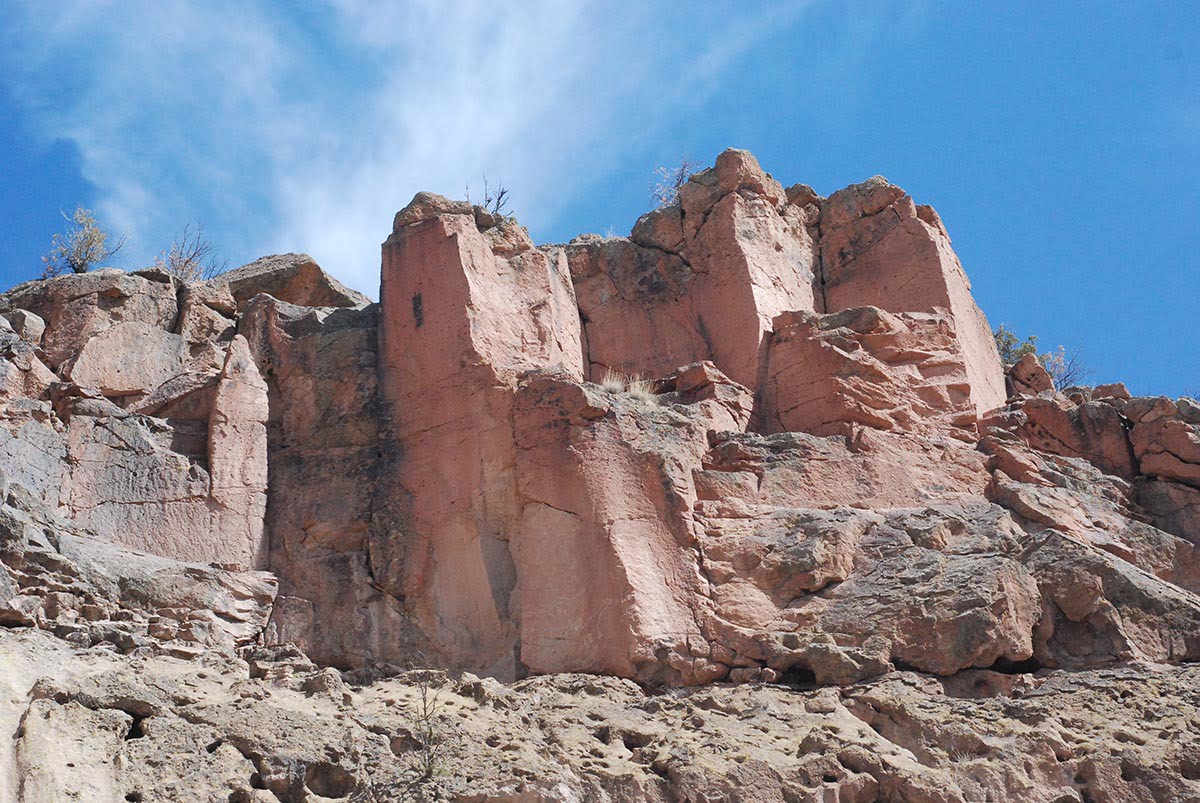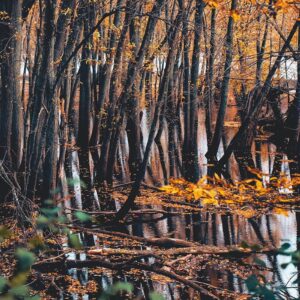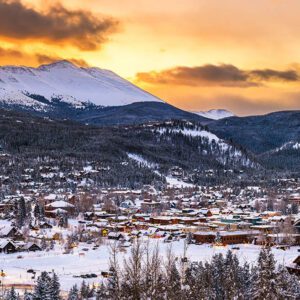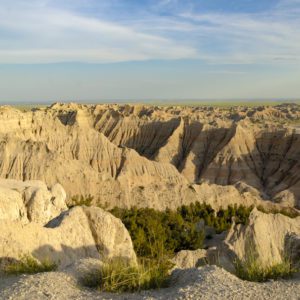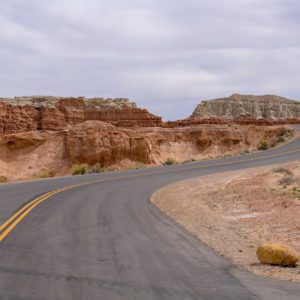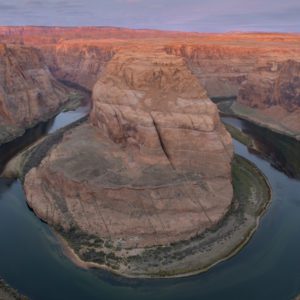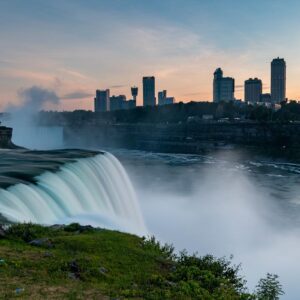New Mexico’s capital city, Santa Fe, is the living embodiment of all things southwest. This blend of wild west roots, Native American heritage, and a thriving art scene has created a one-of-a-kind cultural hub that you must visit to fully appreciate.
Located at the base of the Sangre de Cristo mountain range, Santa Fe sits on what was once the famous Route 66, making it an ideal stop on any road trip. The City Different has dozens of hidden gems and tourist attractions to explore. And if you’re looking for outdoor recreation, you can’t beat Santa Fe National Forest.
Read on to learn what you need to see and do on your trip to Santa Fe.
New Mexico History Museum
Kick off your Santa Fe visit at the New Mexico History Museum. The modern, updated campus opened in 2009 and encompasses three buildings: the Pete V. Domenici Building, which houses the museum’s collections, the Chávez Library Building, and the Palace of the Governors.
Inside the Domenici building, three-and-a-half floors feature dozens of exhibits on southwestern history. Get to know northern New Mexico locals, from the area’s first residents to those of the modern day, and everyone else in between who helped shape the Land of Enchantment.
Events include lecture series and art walks, the latter of which take place on the first Friday of every month. But that’s not the only thing going down on Friday nights. During once-a-month Late Night Fridays, visitors can also experience the museum after dark.
Santa Fe Plaza
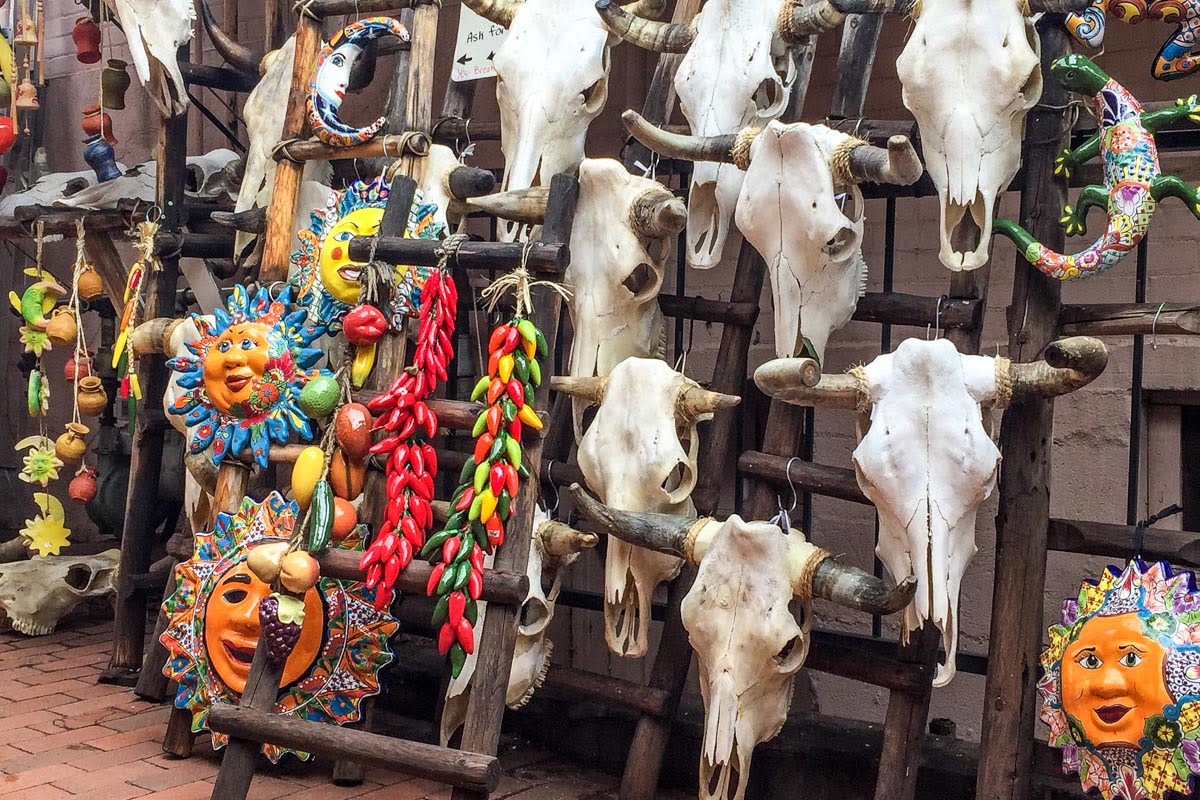
There’s no shortage of Native American arts and crafts in the shops and galleries of downtown Santa Fe. Photo by Peter Stringer for Amazing America.
Santa Fe Plaza packs a punch of New Mexican history, heritage, and heart into one city block. Built by Spanish colonists, the square later marked the western end of the Santa Fe Trail trade route connecting New Mexico to Missouri.
Today, take a seat on one of the benches to people-watch or hear a live musical performance at this National Historic Landmark. You can also admire the different styles of architecture lining the plaza’s perimeter and window-shop at an assortment of art galleries and boutiques.
During the holidays, the plaza lights up with luminarias and farolitos. You might also catch a glimpse of Santa and Mrs. Claus during the annual Christmas at the Palace celebration in early December.
Palace of the Governors
The seat of New Mexico’s state government since 1610, the 400-year-old Palace of the Governors is the oldest public building in the United States. The palace has been recognized as both a National Historic Landmark and a National Treasure.
As you stroll through the plaza, you can pick out the palace by its block-long portal, or entrance hall. Native American artists have sold handmade jewelry, pottery, and other wares beneath this exterior walkway for decades.
Inside the building, visitors can see exhibits on the palace’s history and stop by the Palace Press, a continuation of Santa Fe’s centuries-old printing tradition. The Palace Press is a haven for book-art nerds and spotlights a traditional printing press used during workshops.
Cathedral Basilica of St. Francis of Assisi
A short walk from the plaza, the Cathedral Basilica of St. Francis of Assisi is a favorite Santa Fe landmark. Construction was completed in 1886 under New Mexico’s first bishop, Jean-Baptiste Lamy, and Pope Benedict XVI officially named Saint Francis Cathedral a basilica in 2005.
The basilica gives guided tours from Monday to Sunday every week. You can even step back through time in the attached La Conquistadora Chapel, preserved from an older church built on the same site in 1714.
After wrapping up your tour at Saint Francis Cathedral, head to another notable church in the area, Loretto Chapel. There, you might just witness a miracle—depending on who you ask. The chapel opens to visitors every day except Christmas.
El Rancho de las Golondrinas
El Rancho de las Golondrinas, or the Ranch of the Swallows, shows life as lived by early New Mexicans. The site is open from April through October, and hosts a number of fun festivals in a rural farm setting.
El Rancho historically served as a paraje (stopping point) on El Camino Real, a road stretching from Mexico City to Santa Fe. Now, reenactors in period garb walk visitors through a day at the ranch in its heyday, demonstrating traditional methods of baking, tanning hides, and more.
During your visit, set aside some time for the Leonora Curtin Wetland Preserve. Open by appointment only for most of the year, the area contains a natural cienega (spring) frequented by local wildlife.
La Cieneguilla Petroglyphs
Take a short drive from downtown Santa Fe to La Cieneguilla Petroglyphs site, where you can see hundreds of rock carvings from pre-Columbian pueblan tribes. Thought to be from the 13th and 17th centuries, the carvings include depictions of the hump-backed flute player known as Kokopelli.
As you hike along the mesa, consider this special chapter of Santa Fe’s Native American history. The petroglyphs’ meanings are largely unknown, but you can spend an afternoon speculating as to what their creators meant to convey.
Georgia O’Keeffe Museum
This downtown spot tops lists of Santa Fe museums for good reason. Permanent and rotating exhibits chart the life of the master painter, from her early career on the east coast to her enduring fascination with the American southwest.
Learn more about O’Keeffe and her inspirations by viewing dozens of paintings and relics from her life. You can also view a collection of photos shot by O’Keeffe’s husband, artist Alfred Stieglitz.
A visit to the museum will fit into any Santa Fe itinerary, as you should plan to spend about an hour here. But die-hard O’Keeffe fans should hit the road to Ghost Ranch, where the artist lived and painted for years (more on that later).
Museum of Indian Arts and Culture
Located on Santa Fe’s Museum Hill, the Museum of Indian Arts and Culture displays the diversity of the Native Southwest. Collections of jewelry, pottery, paintings, and other items provide a look into the lives of the 23 tribes that call New Mexico home.
In addition to millions of Native American artifacts, the museum hosts educational resources for all ages. Visitors can attend pottery demonstrations, Native speaker visits, or the monthly Let’s Take a Look series, where curators share the history behind guests’ treasures.
If you time your visit during Memorial Day weekend, shop the annual Native Treasures Art Market. Held at the Santa Fe Community Convention Center, the event features performances, children’s activities, and handmade work from over 150 Indigenous artists.
Meow Wolf’s House of Eternal Return
Although Meow Wolf has expanded across the southwest, Santa Fe is home for the well-known creative collective. The company got its start at the aptly titled House of Eternal Return, an interactive art museum/live music venue located inside Rufina Circle.
Much like Santa Fe itself, The House of Eternal Return can be difficult to describe. Guests crawl through a washing machine to another world, traverse a new dimension inside a kitchen fridge, and play instruments made of light beams. Make sure to bring comfy clothes and an open mind.
If you couldn’t tell already, this one is a no-brainer for any families with kids—even kids at heart. After traveling across the universe, grown-ups can sip an out-of-this-world cocktail at the Float Cafe & Bar.
Railyard Arts District
Can’t get enough of Santa Fe’s art? Check out contemporary creations from local and international artists at the Railyard Arts District. Once the city’s central transportation hub, the railyard now hosts art galleries and weekly farmers markets rather than boxcars.
The RAD showcases everything from colorful fine art to Japanese bamboo baskets inside roomy, warehouse-style buildings, just a few blocks from Santa Fe Plaza. Visitors can also swing by the contemporary SITE Santa Fe art museum or watch a matinee at the Violet Crown Cinema movie theater.
This walkable area ranks among the best arts districts in the United States, so come prepared to snag a favorite piece and meet plenty of talented artists.
Santa Fe Opera House
Perched in the red hills above U.S. Highway 84, the open-air Santa Fe Opera House offers a new way to enjoy the performing arts. Musician John O. Crosby first built the opera house as a 480-seat structure back in 1957. Today, seats number over 2,000.
The annual festival season runs from June through August, and you can tour backstage during these months. But to fully experience the opera house, you have to attend a show. The company’s repertory covers classics like “Orfeo” and “Tosca,” as well as a number of original works developed on the premises.
Take advantage of the shuttles, which ferry audiences from downtown Santa Fe to the opera house during festival season. If you’re a full-fledged convert, you can call the box office to book a season subscription.
Cerrillos Hills State Park
Less than 20 miles south of Santa Fe, you can find Cerrillos Hills State Park just off the Turquoise Trail National Scenic Byway. The park is open for day use only, but you can pack plenty of activities into one day.
Hop in the saddle for a guided horseback ride or hike on foot through the park’s five miles of trails. Besides encountering local wildlife, you can survey historic mining sites left over from a brief mining boom that took place in the late 1800s.
With views of the Sangre de Cristo and Ortiz mountain ranges, Cerrillos Hills is a great spot to take in a healthy dose of Santa Fe scenery and learn more about the history of the land. You can also pack a picnic to munch on after your walk or ride.
Pecos National Historical Park
Drive about half an hour from the city to sample a slice of Santa Fe history. The area now known as Pecos National Historical Park was once a crossroads through which traders, explorers, ranchers, and more traveled over the course of centuries.
Visitors can meander along the three main trails that showcase the area’s history, including pueblan ruins and the remains of a Civil War battle. Cool down in the shallows of the Pecos River, a renowned destination for fly fishers hoping to hook trouts or Rio Grande cutthroats.
Depending on when you visit, you might be able to catch one of the park’s annual special events, like a farolito walk or a Civil War reenactment. Otherwise, you can take a ranger-guided tour at any time of the year. Grab your tickets early, as they often sell out.
Santa Fe Botanical Garden
Sprawling over Museum Hill, the Santa Fe Botanical Garden is a stunning display of native and non-native flora. From high-altitude cacti to edible staple crops, the landscape changes with the seasons, so you should plan your return trip ASAP.
Three main sections make up the garden: the Piñon-Juniper Woodland, the Orchard Gardens, and Ojos y Manos: Eyes and Hands. Guests can walk all 19 acres via winding sand and gravel paths. A quarter of the trail within the Piñon-Juniper Woodland is suitable for wheelchair users.
The garden and its architecture meld with the Santa Fe terrain, including the city’s cultural landscape. An art trail, updated annually, exhibits a variety of sculptures and naturalistic paintings.
Hyde Memorial State Park
To catch incredible vistas, hit the trails. Just eight miles away from Santa Fe, Hyde Memorial State Park sets the stage for year-round recreation, no matter what activity you have in mind.
Visitors can snowshoe, cross-country ski, and sled during the winter, while the summer brings perfect hiking and biking weather. For lodging, sleep under the stars at the Hyde Memorial Campground or cozy up in a yurt. The visitor center even provides wifi for all you digital nomads out there.
The historic Hyde Park Lodge is a must-see in and of itself. If you’re planning an event in or around Santa Fe, you’ll definitely want to check out this venue.
Ski Santa Fe
A winter trip to Santa Fe wouldn’t be complete without a stop by Ski Santa Fe. Atop the Sangre de Cristos, the resort comprises almost 90 trails for skiers of all levels. Beginners will like the mountain’s assorted groomers, while adrenaline junkies can tackle the terrain park and gladed tree runs.
After you finish shredding the fresh powder, warm up with a cup of hot cocoa at La Casa or Totemoff’s, Ski Santa Fe’s two on-snow restaurants. During warmer days you can take a hike through groves of quaking aspens on the Aspen Vista Trail, which ends at the top of the resort.
Bandelier National Monument
About 40 miles outside of Santa Fe, Bandelier National Monument is a top-notch spot to experience native New Mexican history and culture. The monument consists of over 30,000 acres that include ancient cave dwellings and a traditional ceremonial house known as a kiva.
To reduce crowding, mandatory shuttle buses operate during the busy summer months. Once you arrive, explore the ruins, boat down Frijoles Canyon, or stay a night or two at the campground. No matter how much time you spend here, you’re guaranteed to learn something new.
San Ildefonso Pueblo
Calling all pottery aficionados! San Ildefonso Pueblo is just 23 miles north of Santa Fe and is best known as the home of Indigenous ceramists Joel and Maria Martinez, who developed the iconic black-on-black pottery style now seen across the southwest.
Researchers believe that the pueblo’s people originally hail from the Bandelier and Mesa Verde settlements, which were abandoned due to environmental shifts. San Ildefonso currently hosts a vibrant community of about 1,500 residents living in traditional adobe structures.
You can view local art at the San Ildefonso Museum and artists’ homes, which are open to the public. Visit on a feast day to watch dance performances and other celebrations—just remember to respect the pueblo’s culture and keep your cameras off.
Ghost Ranch
Georgia O’Keeffe’s adobe house, Ghost Ranch, is located in the small town of Abiquiu. It’s an hour’s drive north of Santa Fe, but the road trip is well-worth it for any O’Keeffe fanatics.
These days, the ranch operates as an education and retreat center. You can take a guided tour of the ranch itself, or hike up the sandstone buttes for a bird’s eye perspective on the land that inspired some of O’Keeffe’s most famous work.
The annual Blossoms and Bones Festival draws crowds for two days of live music in August. The rest of the year, guests participate in creative workshops, traditional ranch activities, and a movie tour that showcases how Ghost Ranch ignites artistry to this day.
As you plan your next road trip, make sure to research the best times of year to visit Santa Fe and experience as much as possible. Whether you want to enjoy some solitude in nature or a bustling and historical downtown, The City Different has it all.

